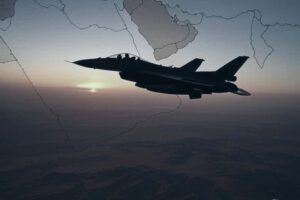
With the Israel-Iran conflict escalating, Iranian ballistic missile capabilities are taking center stage. However, the latest missile assault on Israel exposed an uncomfortable reality for Tehran: The limited effectiveness of its missile arsenal without a stronger punch from Hezbollah.
Hezbollah’s strategic importance to Iran was based on its ability to launch sustained, large-scale rocket barrages from Lebanon, threatening civilian and military targets. Its potential capacity to saturate Israel’s air defenses posed the risk of overwhelming the IDF’s defensive capabilities, causing high casualties and crippling key infrastructure.
In contrast, Iran’s ballistic missile arsenal lacks the quantity and immediacy needed to pose the same level of threat by itself.
Iran’s ballistic missiles offer strategic depth by enabling Tehran to strike targets in Israel from afar, but they are most effectively used as a deterrent or in coordination with Hezbollah’s attacks.
In essence, Iranian missiles were designed to be a complementary force, while Hezbollah overwhelms Israel with sheer volume. Without Hezbollah launching large numbers of rockets from Israel’s northern border, Iran’s missile arsenal alone lacks the capacity to deliver a decisive blow.
The ongoing conflict between Israel and Hezbollah, alongside the broader war with Hamas, has led to substantial degradation of these proxy forces. Both Hezbollah and Hamas suffered significant losses, weakening their ability to operate effectively against Israel.
Iran’s assault falls short
This debilitation of Iran’s proxies leaves the Iranian regime in a more vulnerable position. Hezbollah’s ability to launch massive rocket and missile barrages was a cornerstone of Tehran’s regional strategy against Israel; without it, Iran’s missile threat diminishes in significance, as was recently demonstrated.
Faced with growing scrutiny over its inability to save Hamas or assist Hezbollah, Iran felt compelled to take action. While aiming to avoid a full-scale regional war, Tehran concluded that complete inaction would signal weakness to both foes and allies.
Given its limited options, Iran turned to its most readily available and formidable military asset, launching a barrage of approximately 200 missiles at Israel.
Although this made headlines and generated dramatic imagery, the damage was ultimately limited. The attack targeted two Israeli airbases and Mossad’s headquarters but failed to inflict serious damage or disrupt Israel’s military operations.
Weaker strategic position
In the bottom line, Iran’s missile arsenal is not designed to serve as the primary offensive weapon in isolation. The effectiveness of Iran’s missile deterrence has always been dependent on coordinated proxy warfare, with Hezbollah (and to a lesser extent Hamas) acting as the first line of attack.
With Hezbollah and Hamas now weakened, Iran’s strategic reach is curtailed. The long-range ballistic missiles, while capable of targeting Israel’s military bases and home front, are less effective without Hezbollah’s massive firepower.
This shift leaves Iran in a weaker strategic position in the current war with Israel. The degradation of Hezbollah and Hamas forces military planners in Tehran to rethink their tactics, as well as Iran’s overall strategy.
If Hezbollah is unable to fulfill its role as the primary threat to Israel’s security, Iran’s missiles lose their force multiplier, and their value as a deterrent diminishes significantly.
Moreover, launching ballistic missiles from Iranian territory without the cover of proxy forces would further escalate the conflict with Israel, likely triggering global condemnation and harsh military retaliation by the IDF.


